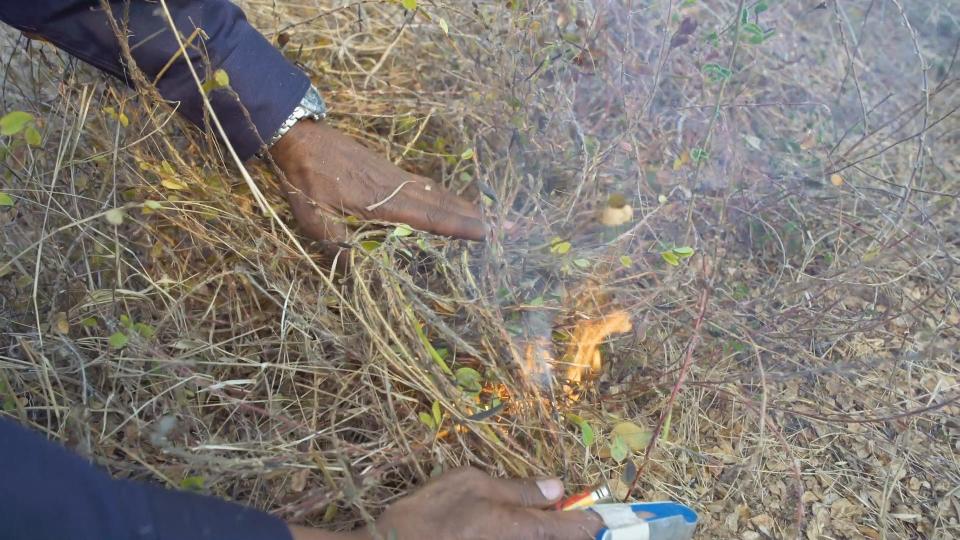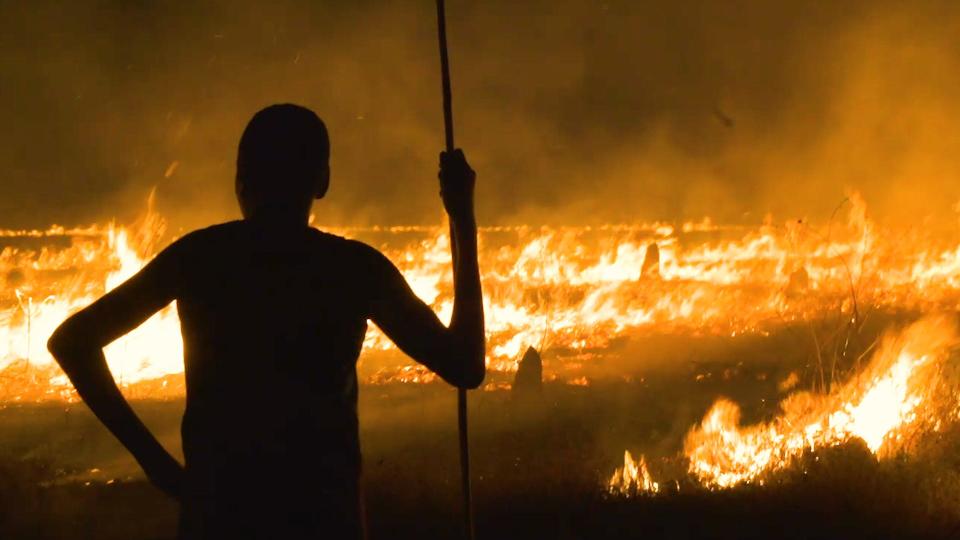This thousand-year-old Aboriginal tradition of lighting fires could be a solution to fight Australia's devastating bushfires
Aboriginal groups in Australia have been lighting their own lands on fire as part of a fire management technique dating back thousands of years.
Using controlled low flames and the power of the wind, the groups clear grasses and kindling that fuel the more unpredictable blazes that occur during fire season.
Business Insider Today spoke with members of Firesticks, an organization of Indigenous fire practitioners who believe their ancient techniques could solve Australia's bushfire crisis.
In the remote bush of northeastern Australia, children learn to light fires at a young age.
It's an Aboriginal tradition that goes back thousands of years: using fire to stop fire.
Long before European colonizers settled in Australia, Indigenous groups have been setting their own lands ablaze as a fire management technique. They use carefully controlled low flames and the power of the wind to clear grasses and kindling, the materials that fuel more unpredictable blazes during fire season.
Many Indigenous people see their techniques as part of a solution for devastating blazes like the ones that have ravaged the country in recent months.
In the state of Queensland, the Indigenous organization Firesticks hosts workshops for people from across the country to spread knowledge of the ancient technique.
"Western knowledge of fire is that they're afraid of it," Kylee Clubb, a fire practitioner from Queensland, told Business Insider Today. "Whereas traditional burning and Aboriginal knowledge is that we work with it."
Business Insider Today traveled to Queensland last July to speak with three Indigenous fire practitioners and witness the traditional burning many believe could help save Australia from itself.
Following is a transcript of a Business Insider Today episode, edited for clarity and length.

Clare Richardson and Henning Goll for Business Insider Today
Lewis Musgrave, Indigenous fire practitioner: We always hear about the big fires down south. People getting – people losing their family and you hear how they're burning down there and it's all wrong. They're doing it all wrong. Nobody seemed to try to figure out or trying to learn a different way, how to stop it. We got tired of seeing people getting hurt down there.
Victor Steffensen, Indigenous fire practitioner: Burning against the wind. If we were to burn it the wrong way, it would have took everything out. But because the fire's trickling, we're leaving behind grasses that are there for certain birds that need that grass. They won't burn everything, you know? It just trickles through all day like this. Like that. Lovely, hey?
Kylee Clubb, Indigenous fire practitioner: The fire would actually just crawl along the ground and not leap up into the trees and up into the canopies. And I guess that's traditional burning.
Steffensen: This is a healthy burn. The trees are in touch, the white smoke from the grasses, feeding the trees to germinate. And the shade all through the country after the fires. Nice and cool in here. Even after the fire, because we haven't harmed any of the trees in the canopies. But yet we've completely cleaned the floor.
During a workshop, the group found an area burned by the Queensland Parks and Wildlife Service using aerial methods.

Clare Richardson and Henning Goll for Business Insider Today
Steffensen: So where we are now, this is what we call Kuwronga, which is a boxwood community. So this has been done by incendiary burn. And dropping the bombs on the country.
What happened is they went up and they came in on the wind side, with the wind, and they dropped multiple fires in here. And she came through and roared through. And now this whole place is sad. No flowers, no shade, no food. And all of this comes from the wrong ignition and the wrong way of looking at country.
Musgrave: It just tears your heart out. It just makes you want to sit down and cry. You know after seeing all that country we did feel and feeling proud of it. But then to get out there and see something what the Parks just did. Yeah. It shatters you ey? Makes you really — makes you really sad inside to see something like that.
Clubb: When you do a lot of the air-dropping, you can't tell what's on there and what kind of trees and what animals are there. And it doesn't give enough time for the animals as well to get away.
The group encountered a park ranger at the site of the burn.

Clare Richardson and Henning Goll for Business Insider Today
Clubb: Honestly, do you think this is a healthy burn?
Queensland Parks and Wildlife Service ranger: No, I don't. It's just the resources to look after such a big national park — that's really where the limitations come on board. I think obviously you want to look after your environment the way you guys do culturally. There is also the environment as well. So we need to make sure those two interact together.
Clubb: There's been massive damage to this area, and like I said, this affects the people spiritually, physically, mentally, emotionally. Like, there's a lot of emotions going on here because there's been a lot of hard work put into this country.
Ranger: If we get wildfires coming through later in the year, it's going to look 10 times worse than this.
Steffensen: We've got people ready to go. What we've been doing this with no money. For all those years. We never had no money.
Ranger: If you guys want to come along and voice your opinions, love youse to come along.
Steffensen: There's no excuses. There's no excuses. No matter what anyone says, we don't do that. We're not here to hang anyone or get wild at Parks. We're here to work with Parks. And for them to chest up and to say, well, come on, let's make this better. We got an opportunity here.
Business Insider reached out to Queensland Parks for comment. The group said that "aerial burning is widely recognised as being an integral part of effective fire management programs, especially in large, remote protected areas." It added that "First Nations People and QPWS rangers work together to plan and implement early-season low-intensity burns to create a mosaic landscape and subsequently lower the risk of damaging late-season fires."
Since the encounter, Firesticks says it has received more support from the parks service.

Clare Richardson and Henning Goll for Business Insider Today
Steffensen: A lot of ecosystems in Australia are dependent on fire, and we need to look after them. Our knowledge of reading landscapes and understanding how fire fits on there comes from thousands of years. And when we look at the bush now it's unhealthy. You know, there's weeds and invasive natives. It's unbalanced. And so we need to make the country healthy again. And fire is a big part of that.
The right fire does everything. Firstly, it's burning spiritually, and it's a spiritual connection to the country. The second component of it is looking after all the trees and the animals in here and making sure they're not getting all burned. So we're looking after our biodiversity. And finally, what our burns are is is to protect our country from wildfires. No wildfire will get through here after this for this year.
Clubb: When the land is healthy, the people are healthy and mentally we feel a lot better because our country is looking strong and that also affects our children and our women and our men. And we feel stronger inside because we know that we're doing the right thing by caring for our country.
It's all about sharing knowledge and sharing with each other. Because we've got to share this country.

Clare Richardson and Henning Goll for Business Insider Today
Steffensen: We have an amazing amount of knowledge that could really show [them] the right way forward. People can burn the incorrect way and it's simply because they don't know the land.
Clubb: As we're all getting older, the next generation has to take on these roles, caring for our country and making sure it's maintained and healthy.
It's very important that our younger ones get out on country with us, light that first match, smell that first burn, and see their country back to the way it is.
Musgrave: It's very important that our younger ones get out on to country with us, light that first match, smell that first burn, and see their country back to the way it is.
Read the original article on Business Insider

